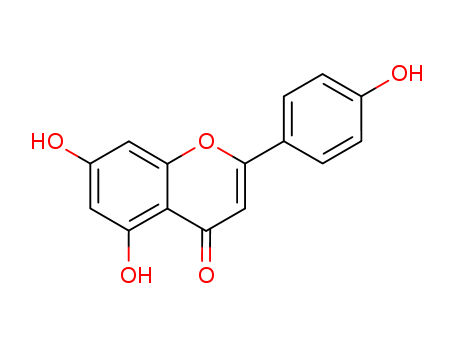10.1016/j.neuropharm.2013.04.020
The research primarily investigates the binding affinity of various flavonoids to the μ-opioid receptor and evaluates the antinociceptive effects of a synthetic flavonoid, 3,3-dibromo?avanone, in mice. The study employs in vitro binding assays using [3H]DAMGO to assess the interaction of different flavonoids with μ-opioid receptors in rat forebrain membranes. The most potent compound, 3,3-dibromo?avanone, is further synthesized and tested in vivo using several pain models, including the acetic acid-induced writhing test, hot plate test, and formalin test, to evaluate its antinociceptive properties. Additional experiments assess potential side effects such as sedation, motor coordination, and gastrointestinal transit inhibition. The synthetic procedure for 3,3-dibromo?avanone is described, and its chemical structure is analyzed using techniques like NMR and EIMS. A series of natural and synthetic flavonoids were tested for their binding affinity to μ-opioid receptors. These included hesperidin, neohesperidin, naringin, rutin, hesperetin, naringenin, flavone, diosmetin, quercetin, apigenin, chrysin, among others. These compounds were obtained from Sigma-Aldrich, Extrasynthese, or were synthesized in the laboratory. The study concludes that 3,3-dibromo?avanone exhibits μ-opioid receptor activation-related antinociceptive effects without significant motor or gastrointestinal side effects, suggesting its potential as an alternative pain treatment.
10.1016/0031-9422(90)85105-O
The research aimed to investigate the flavonoid compounds present in New Zealand Libocedrus species, specifically Libocedrus bidwillii and L. plumosa, and to assess their chemotaxonomic significance. The study's purpose was to support or challenge the existing classification of these species within the Cupressaceae family by analyzing their flavonoid profiles. The conclusions drawn from the research indicated that while the two Libocedrus species shared similar flavonoid types, they were distinct enough to be differentiated, with L. plumosa characterized by the presence of myricetin 3-rhamnoside and L. bidwillii by the presence of a di-acylated quercetin 3-rhamnoside. The chemicals used in the process included various flavonoids such as kaempferol, quercetin, apigenin, luteolin, amentoflavone, and biflavonoids like 7-O-methyl-2,3-dihydroamentoflavone.
10.1016/j.bmc.2014.04.016
The research focuses on the design and discovery of flavonoid-based HIV-1 integrase inhibitors that target both the active site of the enzyme and its interaction with LEDGF/p75. The purpose of this study is to develop novel inhibitors that can combat HIV-1 by inhibiting the viral replication process, specifically the integration of viral DNA into the host genome, which is catalyzed by HIV integrase (IN). The researchers synthesized a series of flavonoid derivatives with the aim of improving the inhibitory activity against IN and disrupting the IN-LEDGF/p75 interaction, which is crucial for viral integration. The study concluded that certain flavonoids, particularly those containing a catechol or β-ketoenol structure, showed potent inhibitory activity against both the catalytic function of IN and the IN-LEDGF/p75 interaction. Notably, the introduction of a hydrophilic morpholine group at the phenolic hydroxyl position resulted in sub- to low-micromolar IN-LEDGF/p75 inhibitory activity. The chemicals used in this process included various flavonoid derivatives, such as quercetin, baicalein, genistein, luteolin, chrysin, apigenin, and naringenin, along with synthetic reagents like acetic anhydride, benzyl bromide, potassium carbonate, and palladium catalysts for the synthesis and modification of these flavonoids.



 Xi
Xi


